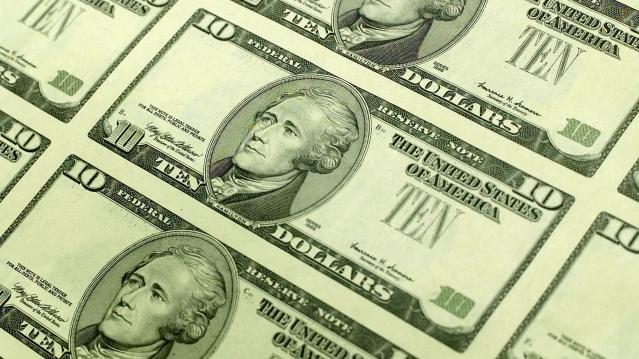Why a Woman Will be on the $10 Bill and Not the $20

The announcement that the Bureau of Engraving and Printing will add a woman to the portrait of Alexander Hamilton on the $10 bill has stirred a lot of conversation as to why the Treasury was not redesigning the $20 bill instead.
It turns out there is a very simple explanation: The move is based on recommendations from the Advanced Counterfeit Deterrence (ACD) Steering Committee.
Related: The Best Bank in Every Region Across America
"Currency is redesigned to stay ahead of counterfeiting," the US Treasury says. "The ACD Steering Committee recommended a redesign of the $10 note next. The ACD will make its next recommendation based on current and potential security threats to currency notes."
The ACD bases those recommendations on the "current and potential security threats to currency notes," and it turns out that the $10 bill is at a greater threat of being counterfeit than the $20 bill.
Secretary of the Treasury Jack Lew announced the change in a statement on YouTube: "I'm proud to announce today that the new $10 bill will be the first bill in more than a century to feature the portrait of a woman.”
Hamilton will share the note with a woman who Lew is expected to choose by the end of the year. The new bill will enter circulation after 2020.
This article originally appeared on Business Insider.
Read more from Business Insider:
Fitbit opens up 52%
Why people are angry about the $10 bill change
The 'Tesla of scooters' is finally available and it looks incredible
Coming Soon: Deductible Relief Day!

You may be familiar with the concept of Tax Freedom Day – the date on which you have earned enough to pay all of your taxes for the year. Focusing on a different kind of financial burden, analysts at the Kaiser Family Foundation have created Deductible Relief Day – the date on which people in employer-sponsored insurance plans have spent enough on health care to meet the average annual deductible.
Average deductibles have more than tripled over the last decade, forcing people to spend more out of pocket each year. As a result, Deductible Relief Day is “getting later and later in the year,” Kaiser’s Larry Levitt said in a tweet Thursday.
Chart of the Day: Families Still Struggling

Ten years into what will soon be the longest economic expansion in U.S. history, 40% of families say they are still struggling, according to a new report from the Urban Institute. “Nearly 4 in 10 nonelderly adults reported that in 2018, their families experienced material hardship—defined as trouble paying or being unable to pay for housing, utilities, food, or medical care at some point during the year—which was not significantly different from the share reporting these difficulties for the previous year,” the report says. “Among adults in families with incomes below twice the federal poverty level (FPL), over 60 percent reported at least one type of material hardship in 2018.”
Chart of the Day: Pragmatism on a Public Option

A recent Morning Consult poll 3,073 U.S. adults who say they support Medicare for All shows that they are just as likely to back a public option that would allow Americans to buy into Medicare or Medicaid without eliminating private health insurance. “The data suggests that, in spite of the fervor for expanding health coverage, a majority of Medicare for All supporters, like all Americans, are leaning into their pragmatism in response to the current political climate — one which has left many skeptical that Capitol Hill can jolt into action on an ambitious proposal like Medicare for All quickly enough to wrangle the soaring costs of health care,” Morning Consult said.
Chart of the Day: The Explosive Growth of the EITC

The Earned Income Tax Credit, a refundable tax credit for low- to moderate-income workers, was established in 1975, with nominal claims of about $1.2 billion ($5.6 billion in 2016 dollars) in its first year. According to the Tax Policy Center, by 2016 “the total was $66.7 billion, almost 12 times larger in real terms.”
Chart of the Day: The Big Picture on Health Care Costs

“The health care services that rack up the highest out-of-pocket costs for patients aren't the same ones that cost the most to the health care system overall,” says Axios’s Caitlin Owens. That may distort our view of how the system works and how best to fix it. For example, Americans spend more out-of-pocket on dental services ($53 billion) than they do on hospital care ($34 billion), but the latter is a much larger part of national health care spending as a whole.





